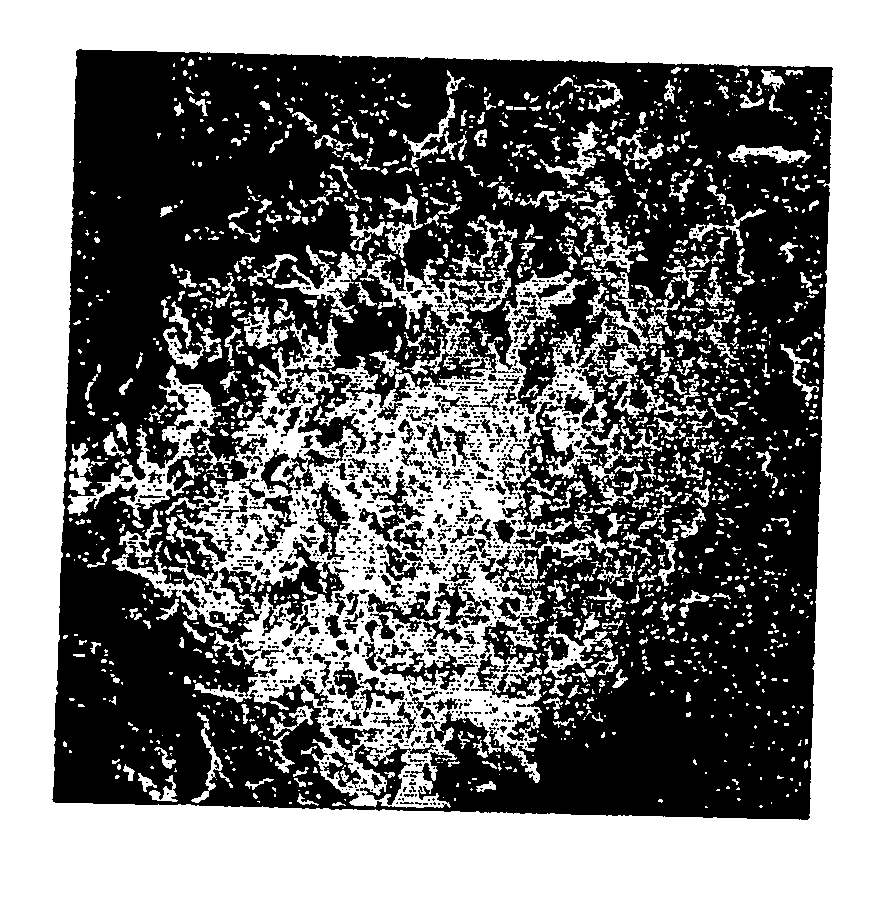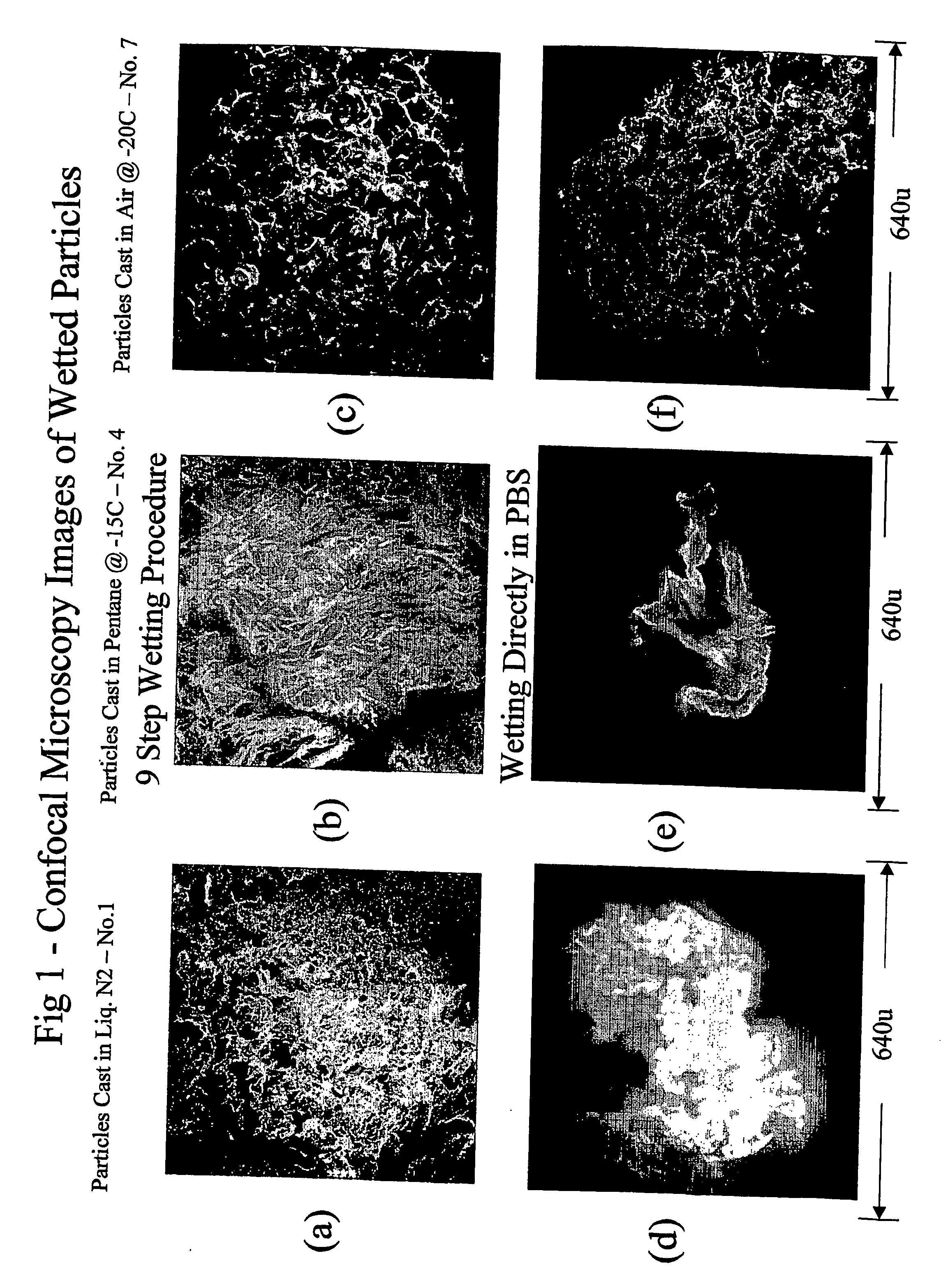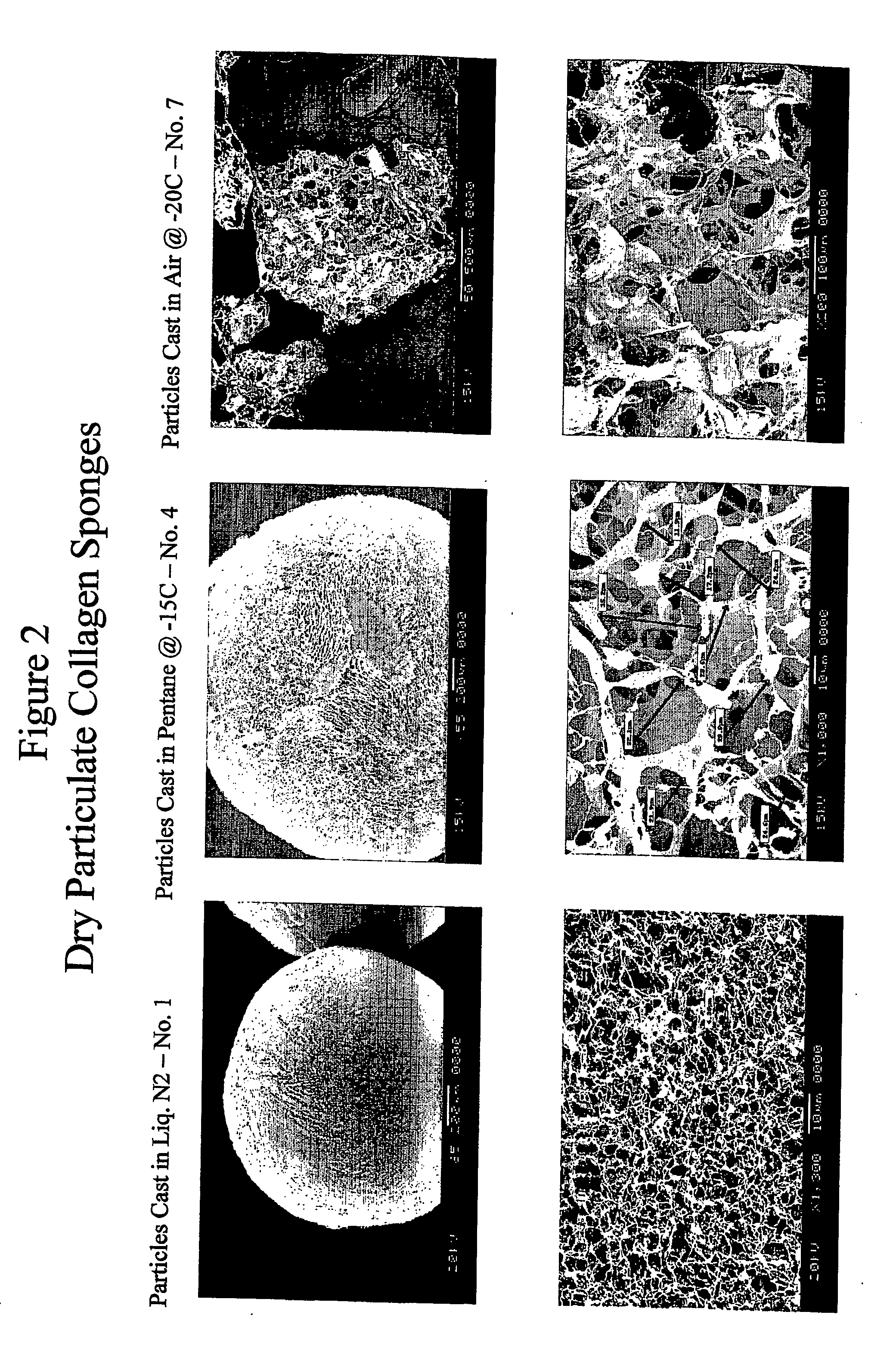Porous particulate collagen sponges
a collagen sponge and porous particulate technology, applied in the field of porous particulate collagen sponges, can solve the problems of difficult to create a man-made sponge-like collagen network, poor long-term performance, and inability to withstand the pressure, and achieve satisfactory porosity and low toxicity.
- Summary
- Abstract
- Description
- Claims
- Application Information
AI Technical Summary
Benefits of technology
Problems solved by technology
Method used
Image
Examples
example 1
Effects of Formulation and Process Variables on Dry Sponge Porosity and Shape
[0271] Example 1 demonstrates the effects of collagen concentration, acetic acid concentration, collagen solubility, freezing temperature, and freezing medium on porosity and particle shape of the particulate sponges of the invention.
example 1b
Effects of Freezing Conditions and Collagen Concentration on Morphology of Dry Spherical Particles
Materials and Methods
[0272] The effects of collagen concentration and cooling conditions on the pore size of dry, spherical particles were evaluated. Formulations listed in the table below were produced and imaged. For nos. 1 to 3 collagen spheres were prepared as follows. Insoluble, type I, bovine collagen from SIGMA was used for all samples. Collagen, acetic acid, and water were mixed at 6000 rpm for 30 min at a temperature −3 MBAR. The lyophilized sponges were dehydrothermally cross-linked at 120 C at <1 torr for 3 days.
[0273] For samples 4 to 6, spheres are prepared as described above with the exception that the dispersion is added dropwise to a stirred pentane bath maintained at −15 C to affect freezing.
[0274] For sample 7, specimens are prepared as described above with the exception that droplets of the dispersion are placed onto a silicone coated plastic film. The droplets s...
example 1c
Effects of Freezing Conditions on Pore Size Distribution of Dry Spherical Sponges—Image Analysis Technique
Materials and Methods:
[0280] Pore size measurements were made for digital SEM photomicrographs obtained for samples 1 and 4 from example 1B using the computer software program Inage Pro Plus 4.5 (available from Media Cybernetics). The protocol for the measurement process using Image Pro Plus 4.5 is as follows:
[0281] From the main menu
(a) open image;
(b) select measure, select calibration, select spatial, set the spatial calibration and close the calibration window;
(c) select measure again from the main menu, select count / size, select measurement, select select measurements, from the drop down box select diameter (max.) and area as the measurements to be made, and select “OK”;
(d) from the count / size window make sure that automatic dark objects, measure objects, and apply filter ranges are all checked;
(e) select the count button; and
(f) to see data select view and t...
PUM
| Property | Measurement | Unit |
|---|---|---|
| diameter | aaaaa | aaaaa |
| diameter | aaaaa | aaaaa |
| pore area | aaaaa | aaaaa |
Abstract
Description
Claims
Application Information
 Login to View More
Login to View More - R&D
- Intellectual Property
- Life Sciences
- Materials
- Tech Scout
- Unparalleled Data Quality
- Higher Quality Content
- 60% Fewer Hallucinations
Browse by: Latest US Patents, China's latest patents, Technical Efficacy Thesaurus, Application Domain, Technology Topic, Popular Technical Reports.
© 2025 PatSnap. All rights reserved.Legal|Privacy policy|Modern Slavery Act Transparency Statement|Sitemap|About US| Contact US: help@patsnap.com



